A new biography by Lina Bernstein revives the legacy of portraitist and painter Magda Nachman, especially relevant to mid-20th century Bombay, where the emigre artist spent her last years
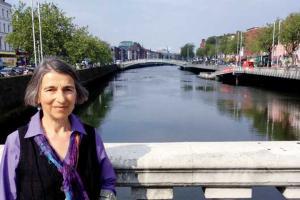
Lina Bernstein, author of Magda Nachman: An Artist in Exile. Pic/David Kramer
 Magda, where are you?" This line closes Lina Bernstein's engrossing biography, Magda Nachman: An Artist in Exile, on the Russian emigre painter unfortunately few have heard of.
Magda, where are you?" This line closes Lina Bernstein's engrossing biography, Magda Nachman: An Artist in Exile, on the Russian emigre painter unfortunately few have heard of.
It is a pertinent question. Living through the last century's most devastating decades, Magda Nachman (1889-1951) was awarded several distinctions and sketched eminent personalities, some landscapes and book illustrations. Her art lies with Indian embassies and discerning buyers.
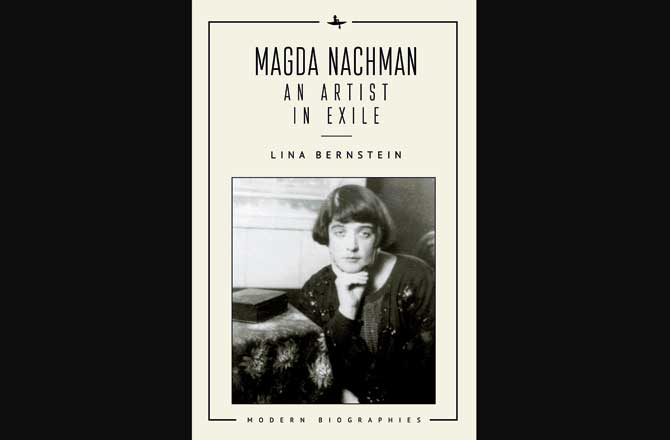
Magda Nachman: An Artist in Exile
A lost artist worthy of rediscovery, she is of vital interest to Bombay, where she settled from 1935-36 with her revolutionary husband, MPT Acharya, and her works were keenly sought. Those were years fashionable to pose for foreign painters—the city elite aware Magda was the portraitist of the poet Marina Tsvetaeva and Lolita author Vladimir Nabokov.
Professor Emerita of Russian and comparative literature at Franklin & Marshall College, Pennsylvania, Bernstein gives Magda back to the world she vanished from 70 years ago. Previously authoring Gogol's Last Book, Bernstein has curated an online exhibit on Magda for Moscow's State Museum of Oriental Cultures and translated Magda Nachman: An Artist in Exile, into Russian. Published by Academic Studies Press, her riveting narrative covers continents engulfed by cataclysmic events in defining epochs. Bernstein tells a tremendous story with compassion and confidence, its research crisscrossing America, Russia, Germany, and Bombay, Pune and Baroda in India.
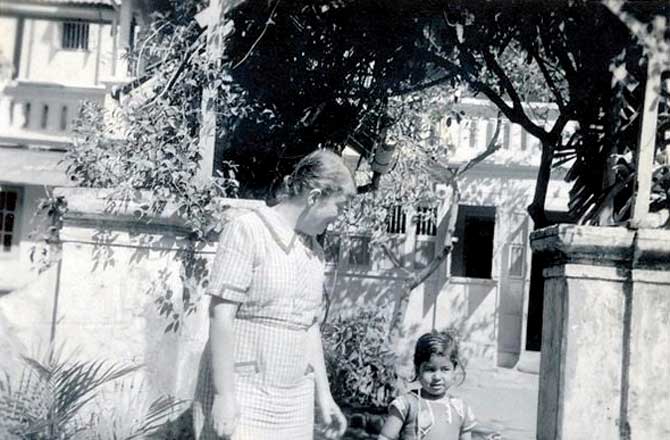
Magda outside her 56 Ridge Road home in Bombay, 1938. Pic courtesy/Lina Bernstein & Sophie Seifalian
Born upper class in the St Petersburg suburb of Pavlovsk to a Jewish father and German Lutheran mother, Magda studied under the legendary Leon Bakst and Kuzma Petrov-Vodkin at the Zvantseva Art Academy. From participating in dynamic symbolist artistic ferment in pre-revolutionary Russia, she was pitifully reduced to a refugee existence in the countryside.
"Magda's career in Russia and Europe was thwarted by war and revolution," says Bernstein. "In India, she was successful and respected in her lifetime. After her death, India focused on modern artists. Hers was a quiet art, and quiet art, whether it is painting, literature or music, tends to recede more quickly in the eye of history than assertive work."
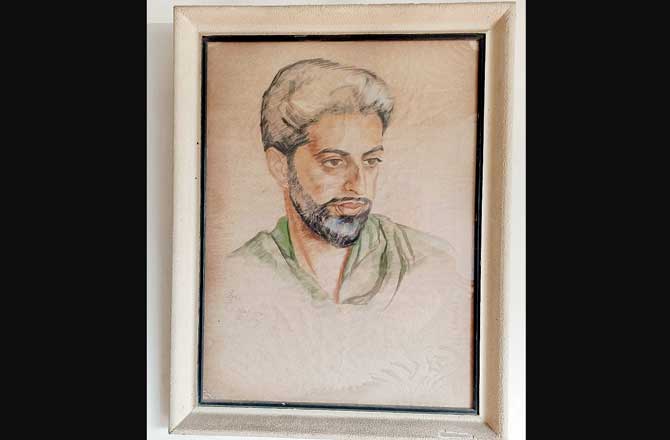
Dinsha Panday, 1946. Pic courtesy/Hira & Adrian Steven
From Magda's letters to friends, Bernstein pieced together her family's plight, struggling to simply survive. Traumatised by the havoc of the 1905 Revolution, World War I, the 1917 Communist Revolution and Civil War, they hurtled down a tragic trajectory from privilege to penury. Sad how, lacking kerosene, paint or brushes, Magda produced pencil and charcoal portraits in exchange for food. Broken-hearted watching her mother and siblings suffer, she despaired that life was "exceedingly unreal" and confessed to being ready for a change.
Meeting MPT Acharya in Moscow brought that turning point. Acharya sought comrades in Russia as ideological partners for Indian liberation. He gradually grew disillusioned by the Bolsheviks' brutality with dissenters. Although outside India since 1908, Acharya kept updated with socio-political developments back home. In a chapter titled Exeunt Stage Left, Bernstein notes she cannot ascertain exactly when and where the couple's paths merged. Marrying in 1921, they reached Germany a year after.

Bougainvillea, 1949. Pic courtesy/John Burns
Acharya became Berlin correspondent of the Bombay Chronicle. Magda earned paltry sums from painting. To the alarm of the influx of Red Terror castaways like them, by the mid-1930s Hitler's anti-Semite sinews flexed full power. Half-Jewish Magda and anarchist Acharya fled to Switzerland, leaving behind most of her work. At their next halt, Paris, they bid an emotional farewell to Acharya's compatriot Madam Cama. Then it was last-stop Bombay they sailed to, on British passports.
Learning that Magda had moved to India in 1936 and started showing with the Bombay Art Society, Bernstein logically looked for other Europeans in Bombay before the Second World War. In a website on the Viennese expressionist dancer Hilde Holger, she located pictures of Holger by Magda. At Holger's studio Magda had encountered important painters like Shiavax Chavda coming to sketch students.

Portrait of a Maharashtrian Woman. Pic courtesy/Darryl & Brian D'monte
"Reviews remarked on Magda's exceptional draftsmanship, subject matter—concerned with the Indian poor, Indian natural world, Indian classical dance—and extraordinary attention to her models' eyes, which expressed their innermost depths," says Bernstein. "The portraiture reveals the essence of her sitters' characters. But I love her Bougainvillea as much."
With barely any works from before known, it is hard pinpointing possible variations in Magda's Indian period work. Fascinated by local colours (Bougainvillea, Hibiscus, Underground), faces (Tribal Girl, Peasant Boy, Old Brahmin) and plants (Banana Vendor, Red Leaves, Sunflowers), she also captured places she loved retreating to in like-minded company—Landscape in Matheran was created enjoying the hill station air with artist-photographer Rutty Petit, who renamed herself Li Gotami on embracing Buddhism.
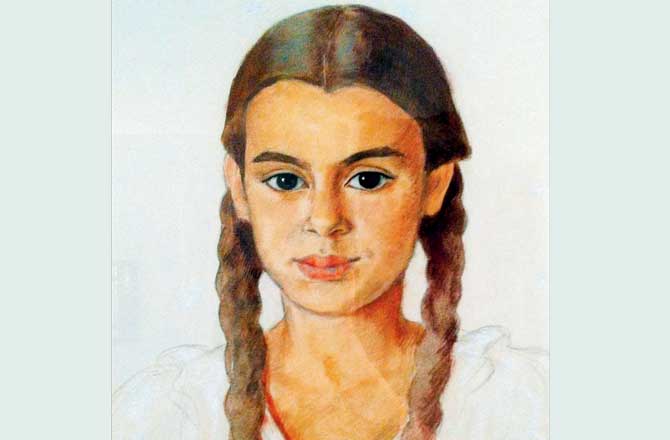
Maya Malhotra, 1950. Malhotra's parents, the Tandons, family friends of the D'Montes, likely introduced the D’Montes to Magda's art. Pic courtesy/Ayesha Malhotra
"Magda Nachman is one of the best Bombay artists, highly esteemed by a small circle of connoisseurs, critics and cultured people, badly neglected by the average art public," assesses German art historian Hermann Goetz. "Yet, she is a painter of India, just because she is not India-born, and is a painter of the soul, because she avoids imagery and mythology. This seems absurd and contradictory to familiar slogans.
"She lives on the fringe of Indo-European society. Her honest goodness and guilelessness do not fit into the society of a great overseas port in a time of revolutionary changes, of quickly earned and spent money, where social contacts and publicity mean half the artist's career. Her perfect, seemingly simple style offers no object to snobbery, neither to the pomp of the fastidious, nor to the novelty-hunting of intellectuals. There are no 'isms' to be discussed; but there is life, there is soul!"
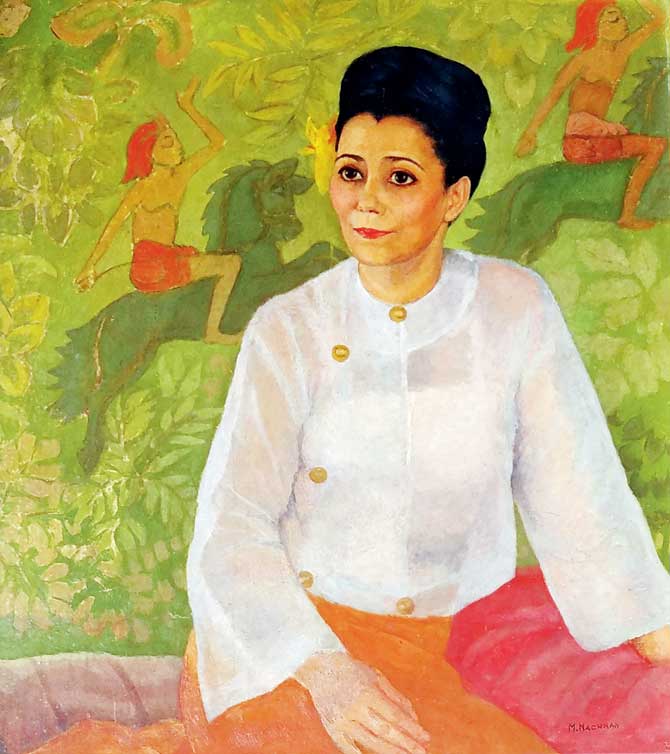
Portrait of a Burmese Lady, ca 1940. Pic Courtesy/Saryu Doshi
Gaining a reputation as "the great little lady of the Bombay art world", as critic Rudolf von Leyden hailed her, Magda was admired by collectors and gallerists from Emmanuel Schlesinger to Kekoo Gandhy. She used a versatile range of mediums: pencil and charcoal to oils, watercolours, pastels and gouache. In 1942 she presented a handsome oil-on-board of the painter Jehangir Sabavala. His wife Shireen, fresh from her teen years, had posed for her, too. Radiant in a red saree teamed with a sleeveless blouse, she noticed Magda hold the paintbrush in a peculiar way. With a crooked thumb, which Shireen attributed to arthritis.
An even younger sitter, Maya Malhotra believes this book will beam the spotlight on Magda, which she richly deserves. From Maryland, near Washington DC, she shares, "Magda's style is as recognisable as Husain's or any wonderful artist. Her life, her family's prominent St Petersburg background and tumultuous history are the stuff of sweeping drama."
Before sending nine-year-old Maya to boarding school at Mussoorie in 1950, her parents, the Tandons, commissioned Magda to draw their daughter. Malhotra says, "Every morning for a week I was dropped by my father at an address in Walkeshwar to her flat, up a driveway to a pre-War building. I recall she was an elderly—it seemed to me—grey-haired European lady. Behind her, through a large open window, was a view of Marine Drive bay."
When Malhotra gathered that Bernstein was retracing Magda's steps, the two set off on a fruitful trip. "Sixty-five years later, Lina and I took a taxi up Walkeshwar to scout out the building according to my memory," says Malhotra. "The scene was different, skyscrapers everywhere, old views no more. The only building that fit my memory was Sital Baug, from about 1935, owned by my friends Vicki and Ramesh Dalal. Ramesh did not remember Magda, but said the artist Ara resided there in the 1950s. We strolled around till we found another building across the road, probably where Magda lived."
Malhotra's recollection of Magda and Ara in neighbouring studios tallies with an episode Akbar Padamsee witnessed when Magda burst into Ara's 64 Walkeshwar Road space (the Acharyas occupied No. 63). Padamsee described a "shortish, not beautiful, angry Russian lady" shouting, "Who are they to reject me? They know nothing about art." Her hurt rose from a tough predicament, a case of perceived identity. Magda had been excluded from a 1948 Indian Art exhibition in London, regarded not Indian enough by the selection committee of organisers.
Asked if Acharya was militant seditionist or nationalist, Bernstein explains, "His views on violence underwent profound change after experiencing Bolshevism in Russia. Becoming a confirmed pacifist, he admired Gandhian methods without supporting Gandhi's ideas of State. Acharya opposed any kind of State, seeing it as a source of coercion and subjugation."
Magda stuck dedicatedly by Acharya, who outlived her, finally succumbing to chronic malnutrition and tuberculosis. Quietly slogging lifelong to support them both, she died of a stroke on February 12, 1951—ironically, mere hours ahead of opening her last major Bombay show, at theatre director and journalist Charles Petras' Institute of Foreign Languages.
There are more canvases rolled up or hung on walls unknown. Magda displayed widely in Russia, at least once solo in Berlin and merits mention in multiple Indian catalogues and reviews. Bernstein says, "I've located only a handful of pictures in Russia, thirteen in India, two in Israel, seventeen paintings and sketches in Great Britain, three in the United States."
Really, may we have more of Magda?
Readers with information about Magda or owners of her works are requested to contact Lina Bernstein at her website devoted to Magda Nachman: magdanachmanacharya.org
Author-publisher Meher Marfatia writes fortnightly on everything that makes her love Mumbai and adore Bombay. Reach her at meher.marfatia @mid-day.com/www.meher arfatia.com
Keep scrolling to read more news
Catch up on all the latest Mumbai news, crime news, current affairs, and a complete guide from food to things to do and events across Mumbai. Also download the new mid-day Android and iOS apps to get latest updates.
Mid-Day is now on Telegram. Click here to join our channel (@middayinfomedialtd) and stay updated with the latest news
 Subscribe today by clicking the link and stay updated with the latest news!" Click here!
Subscribe today by clicking the link and stay updated with the latest news!" Click here!









